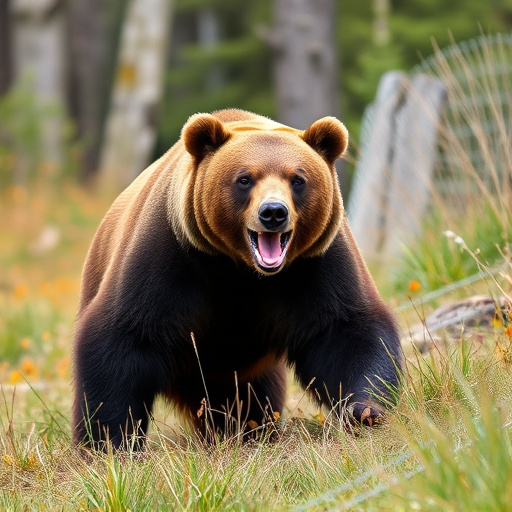Bear spray, a non-lethal deterrent for aggressive bears, uses capsaicin from chili peppers. Effective deployment requires understanding wind direction, aiming at the bear's face, and adhering to recommended ranges (20-30 feet). Safety tips include selecting appropriate bear spray for your environment (grizzlies or black bears), practicing usage, and following manufacturer instructions. Always assess wind direction before deployment and maintain a safe distance from the bear during and after activation.
“Enhance your outdoor adventures with a crucial tool for wildlife encounter protection—bear spray. This comprehensive guide explores the essential aspects of bear spray, including its composition, effectiveness, and how to choose the right one for your needs. We’ll delve into application techniques, emphasizing safety tips for optimal use, especially considering wind direction. By following these environmental considerations, you can ensure effective protection during your outdoor endeavors.”
- Understanding Bear Spray: Its Composition and Effectiveness
- Choosing the Right Bear Spray for Your Needs
- Application Techniques: How to Use Bear Spray Safely
- Environmental Considerations: Wind Direction and Safety Tips for Effective Use
Understanding Bear Spray: Its Composition and Effectiveness
Bear spray is a crucial tool for anyone venturing into bear country, offering a non-lethal means of self-defense against aggressive bears. Understanding its composition and effectiveness is key to ensuring safety tips are followed precisely. This aerosolized repellent contains capsaicin, the active ingredient found in chili peppers, which irritates a bear’s eyes, nose, and throat, causing it to retreat. However, proper use depends heavily on the wind direction—spraying towards the bear’s face will have maximum impact, while spraying into the wind may be less effective as the spray can blow back onto the user.
Knowing how to deploy bear spray properly is essential for its effectiveness. Safety tips include keeping the spray in an easily accessible location, practicing with it before heading into the wild, and ensuring you’re within the recommended range (typically 20-30 feet) when deploying it. By following these guidelines, users can maximize their chances of a safe encounter while exploring bear habitat.
Choosing the Right Bear Spray for Your Needs
When selecting bear spray, understanding your specific needs and environment is crucial. Different situations call for distinct considerations; for instance, if you’re primarily in grizzly country, a higher concentration of capsaicin (the active ingredient) is recommended. Conversely, for black bears, a lower concentration may be adequate. Wind direction safety tips are also vital; always ensure the spray is designed to provide effective coverage against blowing winds, as this can impact its range and accuracy.
Consider factors like weight, size, and ease of use, especially if you’re planning multi-day hikes or outdoor adventures. Some bear sprays come with holsters for easy accessibility, while others offer quick-release belts. Familiarize yourself with the spray’s usage instructions and practice in controlled environments to ensure effective deployment when needed.
Application Techniques: How to Use Bear Spray Safely
When using bear spray, understanding proper application techniques is paramount for safety. First, always read the manufacturer’s instructions thoroughly before use. Bear spray should be employed from a distance, typically 20-30 feet away, when you spot an approaching bear. Aim high, aiming at the bear’s face and eyes, as this can increase the likelihood of effectiveness.
The wind direction plays a crucial role in safe usage. Spraying into the wind increases the risk of the spray blowing back towards you. To mitigate this, try to position yourself upwind of the bear’s path. Remember, timing is key; use your spray when the bear is within 20-30 feet and moving toward you. By following these safety tips, you can enhance your chances of successfully deterring an encounter with a bear while ensuring both your and the animal’s well-being.
Environmental Considerations: Wind Direction and Safety Tips for Effective Use
When considering bear spray as a protection measure during wildlife encounters, understanding environmental factors like wind direction is crucial for safety and effectiveness. Always assess the wind before deployment – an upstream breeze can carry the spray back towards the user, negating its protective effects. Conversely, a downwind direction offers better control over the spray’s range.
Proper use necessitates aiming low, at the bear’s legs and paws, as higher targets can result in less effective coverage. Keep in mind that safety tips include ensuring a safe distance of 25-30 feet (7.6-9 meters) before activation, and never turning your back on the bear during or after use.
